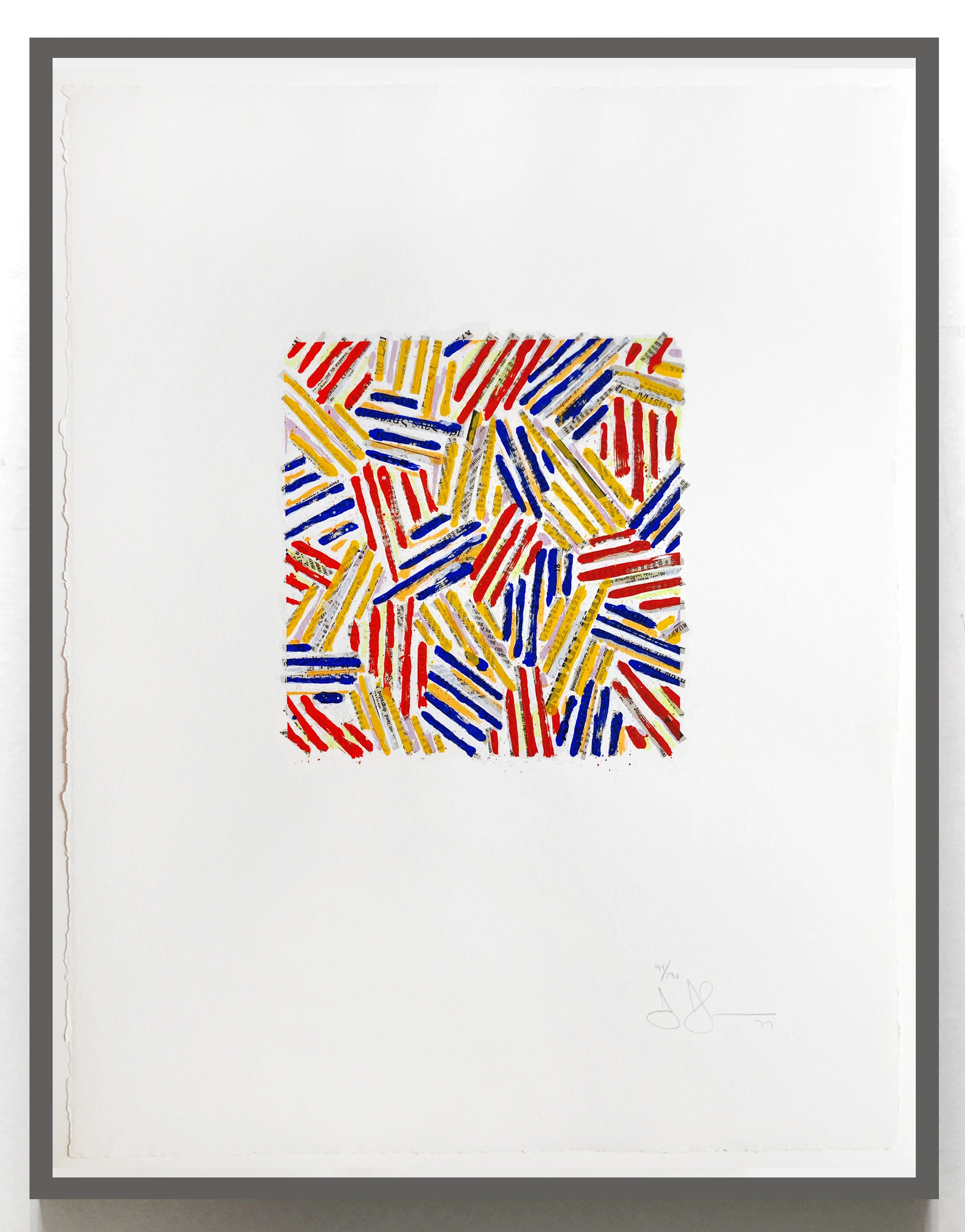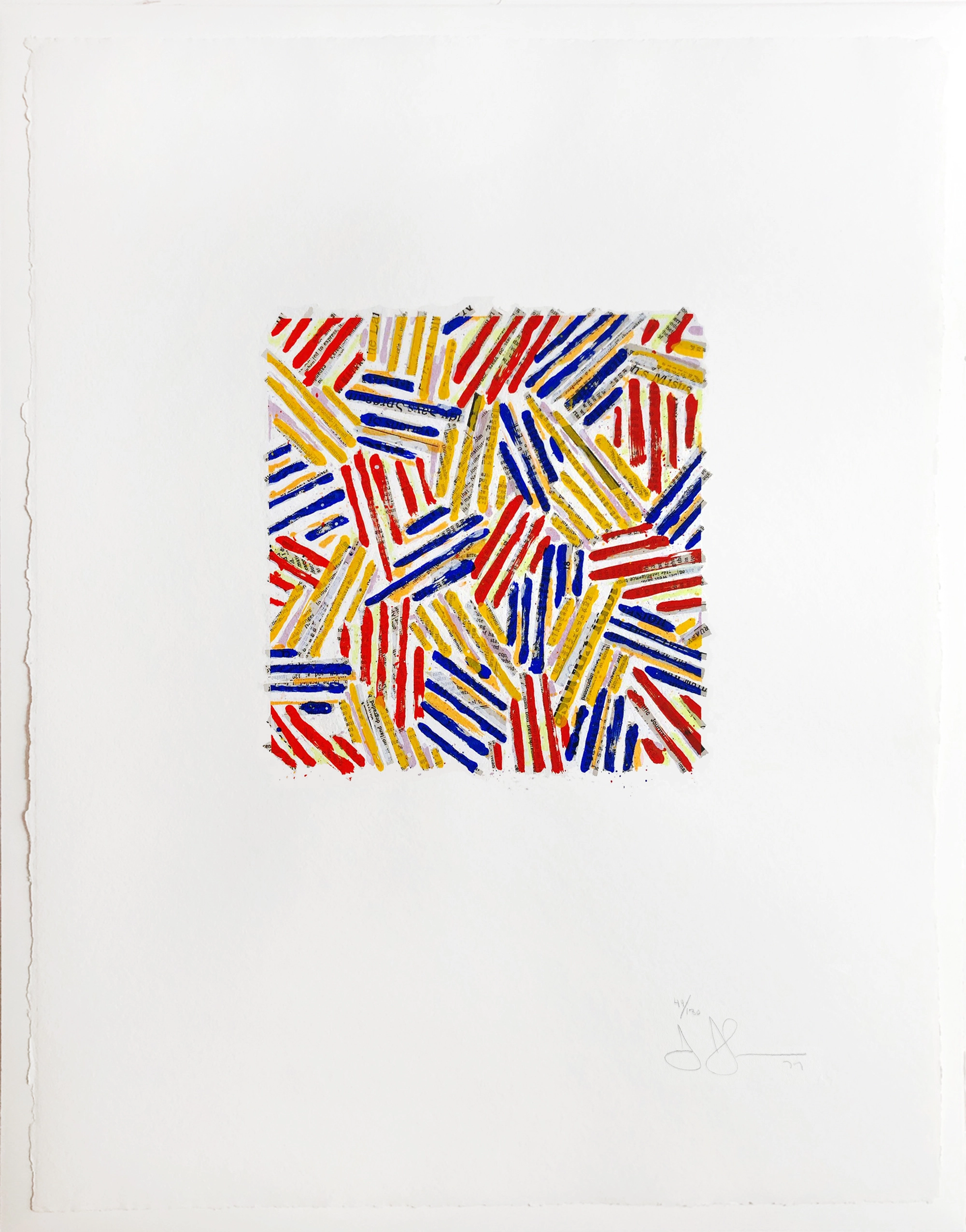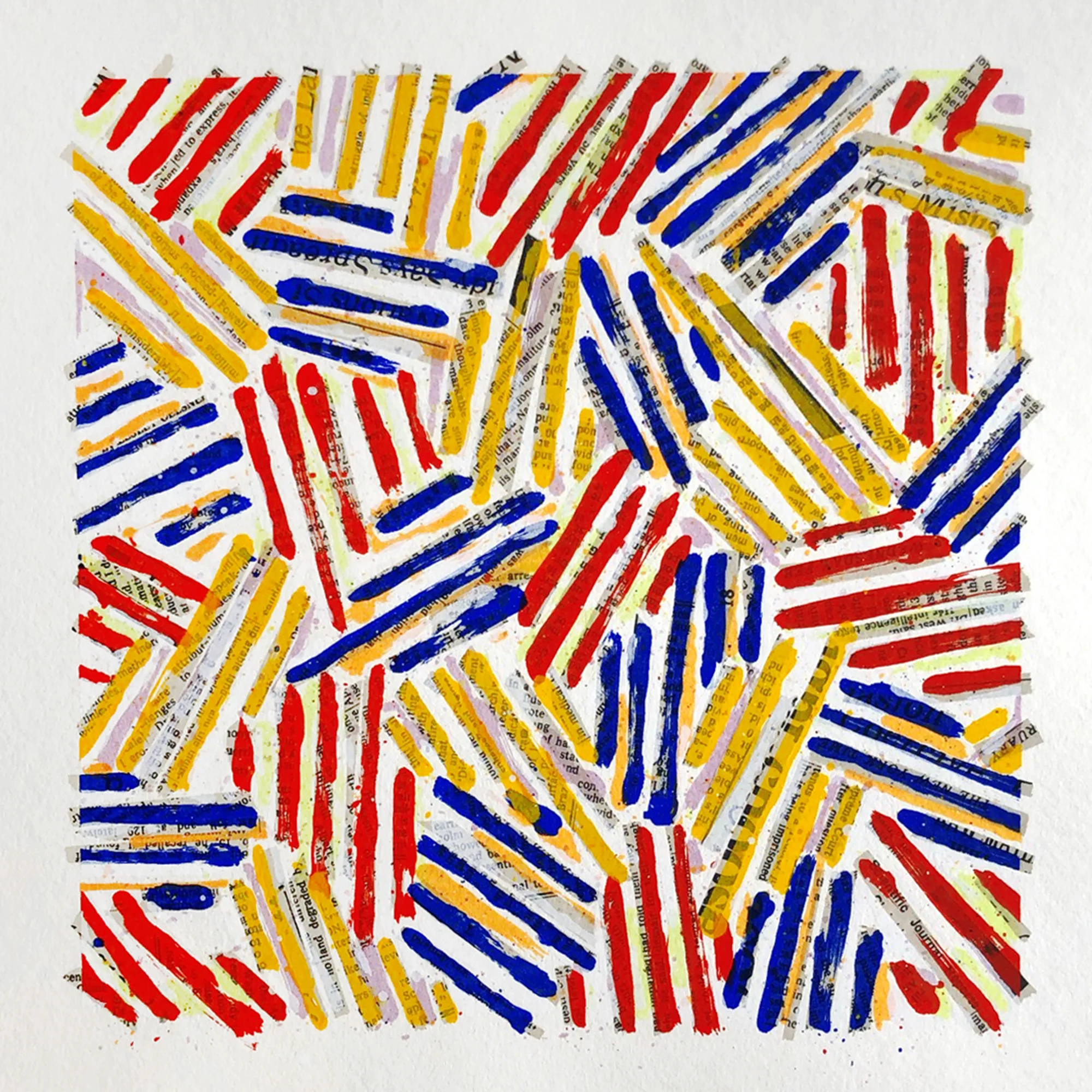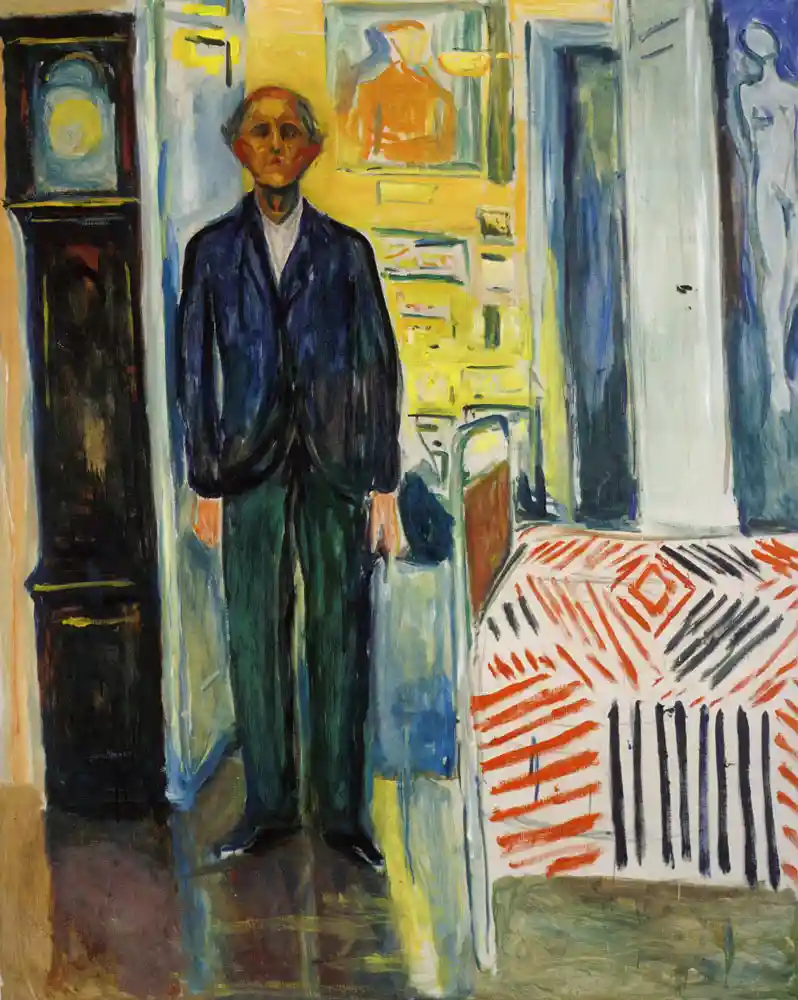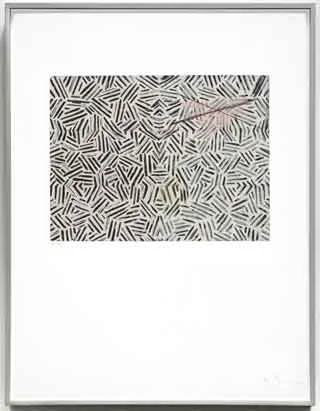Untitled
(ULAE 186), 1977
paper: 24 x 19 inches
frame: 26 x 21 inches
edition: 130 + 13 AP's, 16 HC's & 8 PP's
numbered, signed and dated "Jasper Johns '77" lower right in pencil
Published by Jasper Johns and Simca Print Artists, Inc.
Printed by Kenjiro Nonaka and Hiroshi Kawanishi
© 2024 Jasper Johns / Licensed by VAGA at Artists Rights Society (ARS), NY
Literature
Richard Field, Jasper Johns Prints 1970-1977, Wesleyan University, Middletown, 1978, Catalogue Reference 260, p. 123, another impression reproduced in black and white.
Richard Field, The Prints of Jasper Johns 1960-1993: A Catalogue Raisonne, ULAE, New York, 1994, Jasper Johns Untitled (ULAE 186), 1977, Catalogue Reference ULAE 186, n.p., another impression reproduced in full-page color.
Roberta Bernstein, Jasper Johns The Screenprints, Fisher Landau Center, 1996, plate 13, n.p., another impression reproduced in color.
Selected Museum Collections
Walker Art Center, Minneapolis
Whitney Museum of American Art, New York
Davison Art Center, Middletown
The Metropolitan Museum of Art, New York
Additional Photos
Beginning with his 1972 painting Untitled, Jasper Johns developed his motif of crosshatch lines, experimenting with colors, patterns, mirroring and reversals. According to Johns, the inspiration for his crosshatch works came from a pattern he glimpsed on a car that quickly passed him on a highway, "I only saw it for a second, but immediately thought I would use it for my next painting. It had all the qualities that interest me – literalness, repetitiveness, an obsessive quality, order with dumbness and the possibility of a complete lack of meaning." Over the next ten years, Jasper Johns created many variations on the crosshatch theme in paintings, drawings and prints.
#JasperJohns donates 23 signed & numbered limited edition prints to Davison Art Center @wesleyan_u: in honor of #RichardField, author of three catalogue raisonnés of Jasper Johns prints. https://t.co/BMMjuHNiTy pic.twitter.com/UHXUtGF7cy
— Jasper Johns Prints (@JohnsPrints) February 20, 2019
The condition of Jasper Johns prints plays a pivotal role in preserving the integrity and value of these artworks. The presence of mat staining, fox marks and attenuated colors can significantly impact the overall aesthetic and historical integrity of these artworks. When considering a purchase of a Jasper Johns print, it is crucial to be wary of dealers who claim prints are in good condition despite such issues, as this may be a deliberate attempt to mislead buyers. Transparency is imperative in the art market and dealers who purposefully omit condition details are not acting in the best interest of the collector. It is also advisable to avoid dealers who artificially enhance colors in photos, distorting the true condition of the artwork. Choosing dealers who provide accurate representations, even if it reveals imperfections, ensures that buyers make well-informed decisions, maintaining the authenticity and value of Jasper Johns prints over time.
